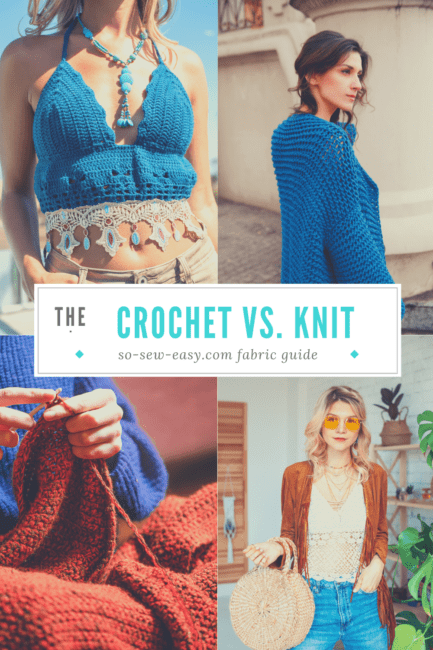
Crochet and knit – two simple words that can ignite a passionate debate among home sewists and fashion designers alike. These two distinct textile techniques have their unique attributes, each lending its own charm and functionality to garments and home accessories. Yet, their differences are so profound that it's virtually impossible to compare them on an equal footing. Today, let's explore the nuanced differences between crochet and knit, and their individual influences on both home sewing and the runway.
Understanding the Techniques
Before diving into their impacts on fashion and home crafts, it's essential to understand the techniques.
Crochet, originating from the French term meaning ‘small hook,' is crafted using a single needle with a hook at one end. It involves creating and pulling loops through each other to form fabric. The stitches in crochet are more complex and can be made in various forms, shapes, and directions, offering an elaborate texture.
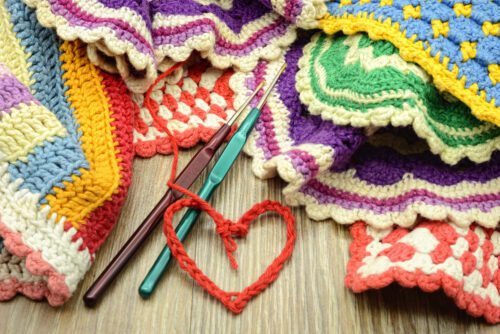

Knitting, on the other hand, involves creating loops in a line or a tube using two needles. The stitches are flatter, creating a softer and more flexible fabric. It's a technique dating back to Egypt around the 5th century AD and is traditionally associated with warmth and comfort.
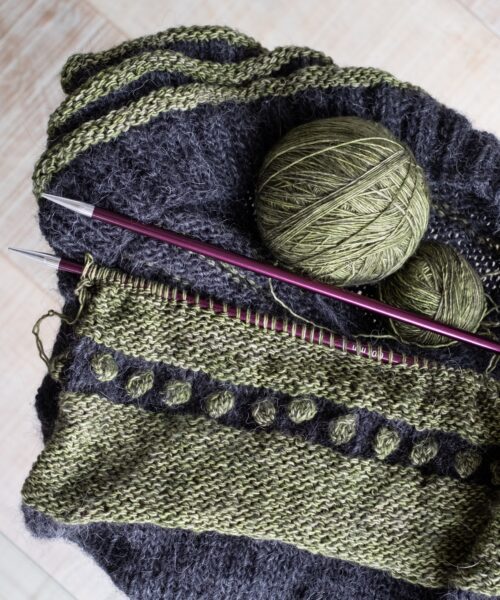

The Impact on Home Crafting
Among home sewists, the choice between crochet and knitting often boils down to the desired product's texture and purpose.
Crochet is ideal for creating intricate patterns like doilies, decorative motifs, or bold, chunky scarves. It's generally more robust and rigid, which works well for crafting items like bags, rugs, or baskets that require a solid form.
Knitting, in contrast, produces softer, drapier materials perfect for cozy sweaters, cuddly blankets, or delicate baby garments. Its elasticity lends itself better for clothing that needs to conform to the body's shape.
The learning curve for both techniques varies, with crochet often viewed as easier to pick up and less daunting for beginners. On the other hand, knitting, once mastered, can be more meditative and rhythmic, providing an element of relaxation.
From the Workbench to the Runway
In the world of high fashion, both crochet and knit have taken center stage at various points. Their use often signals different design sensibilities and fashion messages.
Knitwear has been a staple in fashion collections for decades, offering designers a versatile canvas to play with. Its softness and drape have been utilized by brands like Missoni and Calvin Klein, demonstrating that knit can be chic, avant-garde, or casual.
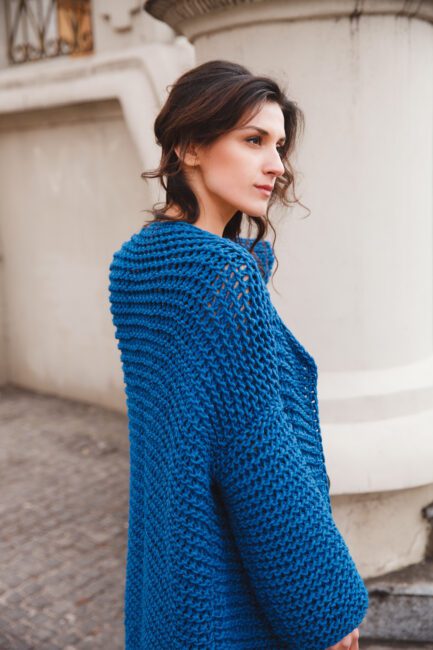

Crochet, however, has experienced a bit of a revolution recently. Its bohemian, handcrafted aesthetic has been embraced by brands like Dolce & Gabbana and Michael Kors. These designers use crochet to create statement pieces that evoke feelings of nostalgia and romanticism, often associated with artisanal craftsmanship.
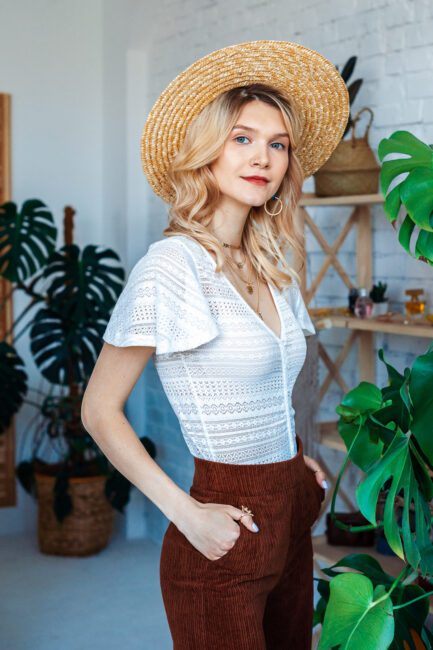

A Stroll Down Memory Lane: The Historical Tapestries of Crochet and Knit
History often reveals fascinating facts and insights about the evolution of techniques, and this is true for both crochet and knit.
The Knitting Story
Knitting, the older of the two, is believed to have originated in the Middle East in the 5th century AD. Its first recorded evidence is found in the form of “Coptic socks” excavated from Egyptian burial sites. From there, the technique traveled to Europe via Mediterranean trade routes.
The introduction of knitting machines during the Industrial Revolution brought a radical shift. Suddenly, a time-intensive craft could be produced on a larger scale. The handmade aspect of knitting became a homely craft, a stark contrast to the mass-produced knitwear of factories.
In the world of fashion, knitting saw a major resurgence in the post-WWII era. Designers like Coco Chanel embraced jersey and knitwear, creating a new wave of comfortable, chic clothing that forever changed women's fashion.
The Crochet Chronicles
The origins of crochet are somewhat murkier than knitting. Early examples of crochet work are hard to find as the materials used – typically thread or fine yarn – didn't stand up well to the passage of time.
The term crochet itself, meaning ‘small hook' in French, started appearing in Europe during the 17th century, suggesting that the technique was starting to gain recognition.
However, crochet as we understand it today really blossomed during the 19th century in Ireland as a cottage industry. Known as ‘Irish crochet,' this technique was a way for families to generate income during the Great Famine. Intricate crocheted lacework, which replicated more expensive, time-consuming lace-making techniques, became highly sought after, leading to a surge in crochet's popularity.
Much like knitting, crochet has experienced a renaissance in the fashion industry. Its handmade aesthetic, flexibility, and potential for intricate detail have led designers to integrate crochet into their collections, signaling both a return to artisanal craft techniques and a move towards more sustainable, less machine-dependent fashion production.
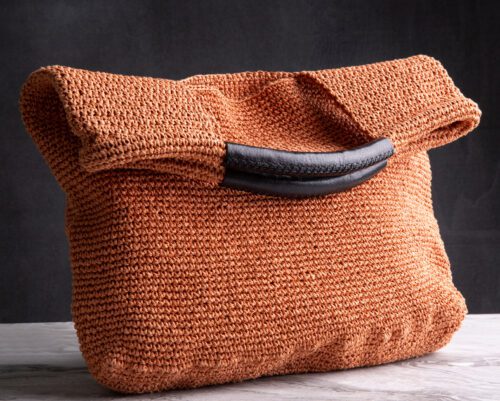

Thus, the stories of crochet and knitting intertwine and diverge, reflecting the times and cultures in which they were developed. From pragmatic solutions to fashion revolutions, they continue to shape and influence our textile practices and aesthetics. The rich histories of these techniques only underscore their relevance and versatility, whether wielded by home sewists or fashion maestros.
Styling 101: Perfecting Looks with Crochet and Knit
Fashion is about more than just clothes; it's about expression, identity, and occasionally, comfort. The use of crochet and knit fabrics plays a significant role in defining a style or look, thanks to their distinct textures and aesthetics. Here are some ideas on how to best utilize each technique to create stunning outfits.
Crochet Chic
Crochet's intricate and bold textures make it ideal for statement pieces that draw attention.
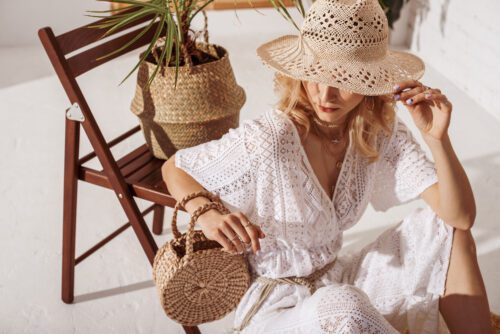

Bohemian Bliss: Embrace the boho vibe with a loose crochet maxi dress paired with layered necklaces, a fringe bag, and gladiator sandals. The outfit speaks of carefree summers and music festivals.
Beachside Glam: Crochet bikinis or cover-ups are a must for beach days. The openwork design offers a stylish way to show off your swimsuit while still providing a layer of coverage. Pair with a wide-brimmed hat and espadrilles for a sophisticated seaside look.
Retro Redux: High-waisted denim and a crochet crop top make for a playful 70s-inspired outfit. Round it off with chunky sandals and oversized sunglasses for a nod to the era of peace and love.
Knit Nuances
On the other hand, knitwear's softness and drape lend themselves to creating versatile and comfortable outfits.
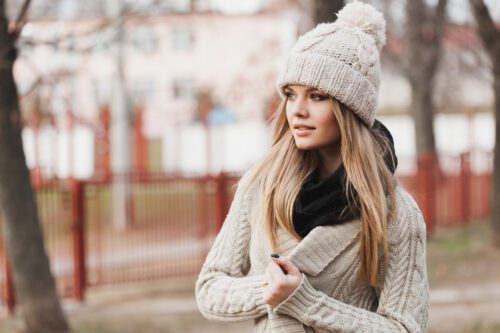

Cozy Elegance: Think of a chunky knit sweater worn over a satin midi skirt. This look contrasts textures beautifully, bringing together comfort and style. Complete the outfit with ankle boots for a chic winter look.
Sporty Sophisticate: Pair a fitted knit top with wide-leg trousers and sneakers. It's a perfect ensemble for a stylish yet laid-back day in the city.
Luxe Layering: Layering is where knit truly shines. A long knit cardigan over a silk blouse and slim-fit jeans creates a dynamic, multi-dimensional outfit that's chic and cozy. Finish the look with heeled ankle boots and a tote bag for an easy transition from day to night.
Let these suggestions inspire you, but don't be afraid to experiment and add your unique twist. After all, the magic of crochet and knit lies in their versatility and adaptability, just like the fashion world itself.







